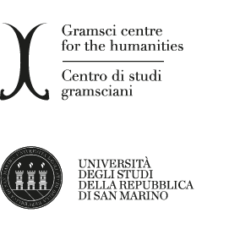During the 2021/2022 academic year, the Gramsci center for the humanities took part in an academic project of the University of the Republic of San Marino entitled The San Marino political archives: census, digitization, fruition [1]Coordinated by Luca Gorgolini (Unirsm), by Michele Chiaruzzi (Unibo; Unirsm), and by our director, Massimo Mastrogregori, the project availed itself of the scientific advice of a research group … Continue reading.
The final outcome of this work will be the publication of a Guide to the recorded archives of personalities and political parties, enriched with more detailed theoretical insights, which will act as a first indispensable tool for accessing the heritages existing on the territory of the Republic; alongside this, as Gramsci center, we have tried to reflect on the formulation of a proposal for the digitization of the identified material, which would provide for its fruition and wider valorization.
The problem of the dialogue between archives and digital has already been posed and tackled in the territory of the Republic, leading to tangible results[2]See the portal Antichi documenti, created by the State Archives, which has also initiated a first digitization of the Fondo Ezio Balducci, as well as the experience of the Fondazione XXV Marzo.. It is to be hoped that the heritages surveyed within the framework of this project may foster further initiatives in this direction, both with a view to citizens’ knowledge and approach to their own historical and cultural heritage, and to facilitate scholars in identifying and accessing documentary sources.
The apparatus of materials traceable to party propaganda (newspapers, leaflets, posters, etc.) appeared particularly rich. The abundance of documents on the subject available in the various funds could allow for the creation of transversal digital paths: historical events, both national and international, could be explored through the different narratives offered by the parties about them, directly confronting the voices of the time. Also interesting would be the conception of real online exhibitions that would accompany the user to discover the transformations in graphics, vocabulary, and communication choices that occurred in the lives of parties throughout the twentieth century and beyond.
In this direction, we tried to imagine a possible mode of digital fruition of documents, illustrated through mockups. The portal would be configured as a first point of access to the funds, susceptible to further stratification.
The realization of the video is by Alessandro Fiorentino.
References
| ↑1 | Coordinated by Luca Gorgolini (Unirsm), by Michele Chiaruzzi (Unibo; Unirsm), and by our director, Massimo Mastrogregori, the project availed itself of the scientific advice of a research group composed, in addition to the coordinators, of Rosa Gobbi (State Archives of the Republic of San Marino), Isabella Manduchi (State Archives of the Republic of San Marino), Matteo Sisti (Memorie di Marca) and Stefano Vitali (former director of the Central Institute for Archives). The census was carried out by Damiano Muccioli, while Alessandro Fiorentino and Andreas Iacarella worked on the digitization proposal for our center. |
|---|---|
| ↑2 | See the portal Antichi documenti, created by the State Archives, which has also initiated a first digitization of the Fondo Ezio Balducci, as well as the experience of the Fondazione XXV Marzo. |

